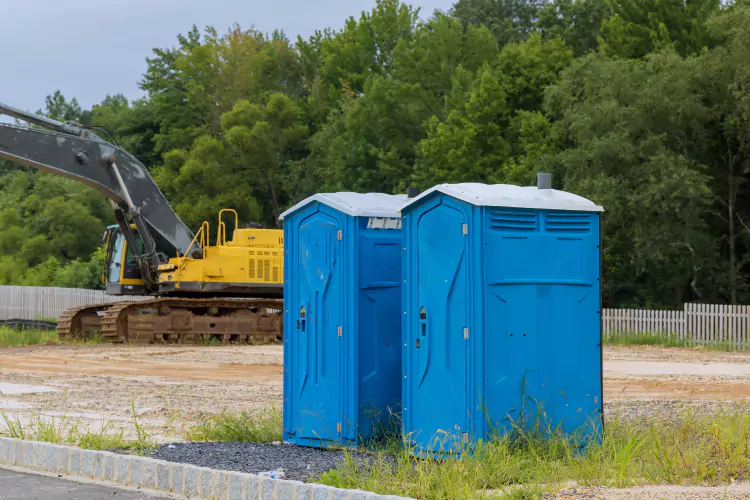Ensuring the health and safety of workers and attendees at various sites and events is paramount. Among the countless considerations, the provision of adequate sanitation facilities stands out as a critical aspect. The Occupational Safety and Health Administration (OSHA) sets forth specific requirements for portable toilets, emphasizing their importance in maintaining sanitary conditions. With the growing reliance on portable sanitation stations and their renting services, understanding and adhering to OSHA’s standards is not only a matter of compliance but also of ensuring the welfare of all individuals on site.
Understanding the Importance of Compliance with OSHA Guidelines
Adhering to OSHA’s guidelines for portable sanitation stations is not just a matter of legal obligation; it embodies a commitment to safeguarding public health and ensuring a dignified, healthy environment for workers and event attendees alike. The standards set by OSHA are meticulously designed to mitigate health hazards that stem from unsanitary conditions, which can lead to the spread of infectious diseases. By following these guidelines, organizations protect themselves against potential penalties and legal ramifications, which could tarnish their reputation and undermine public trust. More significantly, compliance serves as a proactive approach to promoting comfort, preventing disease transmission, and maintaining a respectful and humane environment for all individuals. Implementing these standards effectively requires a thorough understanding of the specific requirements for portable toilets, including their number, placement, maintenance, and the provision of handwashing facilities. It is this adherence to OSHA’s regulations that underscores an organization’s dedication to health, safety, and the well-being of the community it serves. Therefore, the responsibility of meeting these requirements extends beyond mere compliance; it is a testament to an entity’s commitment to upholding high standards of public health and safety.
Determining the Required Number of Portable Toilets
The process of calculating the necessary quantity of portable toilets hinges on several key factors including the size of the workforce or audience and the duration of the work or event. OSHA has established clear ratios that provide guidance for this calculation, aimed at ensuring adequate facilities for everyone without leading to overcrowded or unsanitary conditions. For example, for construction sites, OSHA stipulates that there must be at least one toilet for 20 employees, which should be adjusted proportionally as the number of workers increases. When planning events, organizers must consider peak attendance times and provide additional units to accommodate the increased demand, ensuring that no attendee is left waiting for an unreasonable amount of time. These guidelines help in avoiding health hazards associated with insufficient sanitation facilities. Furthermore, organizers and site managers should anticipate the need for more facilities if the duration of the event extends beyond several hours or if food and beverages are served, factors which can increase the usage rate of the facilities provided. Proper planning in line with OSHA’s standards not only fulfills regulatory requirements but significantly contributes to the comfort and satisfaction of all individuals present, enhancing their overall experience.
Location and Accessibility of Portable Toilets
The strategic positioning of portable toilets is crucial to ensure they are readily accessible to everyone in need, including individuals with disabilities. OSHA mandates this accessibility to foster an environment of inclusivity. Careful consideration must be given to the placement of these facilities to guarantee they are within a reasonable distance for all users, avoiding potential health risks associated with long waits or travel distances to access these amenities. Not only must the units be placed on stable, level ground to prevent tipping and ensure safety, but pathways leading to the toilets should be kept clear of obstacles and well-lit, facilitating safe access at all times, day or night. It is essential that these paths are navigable by everyone, including those with mobility challenges, adhering to OSHA’s commitment to accessibility for all. Additionally, appropriate signage should be utilized to direct users to the location of the portable toilets, enhancing the ease with which these facilities can be found.

Ensuring Privacy and Security in Portable Toilet Use
Meeting OSHA’s expectations for portable toilet use includes a firm commitment to privacy and security, a critical aspect that directly impacts user satisfaction and comfort. Portable toilets must be equipped with locking mechanisms that work properly to secure the space for each user, safeguarding their privacy during use. This requirement is not merely a convenience but a necessity that respects the user’s right to a dignified experience. Furthermore, the design of these units should provide sufficient interior space to accommodate users comfortably, allowing for ease of movement and use without compromising privacy or safety.
The significance of these features extends beyond basic functionality; they are essential in ensuring a positive and respectful environment at work sites and events. Operators of portable sanitation stations must regularly inspect these aspects of their units to ensure they meet OSHA’s stringent standards consistently. This includes checking locks for functionality and assessing the condition and layout of the interior space to confirm that it remains welcoming and secure.
Requirements for Handwashing and Sanitation Facilities
OSHA mandates the inclusion of handwashing stations at locations equipped with portable toilets to ensure comprehensive sanitation measures are in place. These stations must be outfitted with flowing water, soap, and options for drying hands, such as paper towels or air dryers, to facilitate proper hand hygiene practices. Recognizing the potential limitations in certain settings where running water might not be immediately accessible, the provision of hand sanitizers is highly recommended. Such facilities are essential for minimizing the risk of disease transmission by enabling users to clean their hands effectively after using the toilet. It’s crucial for organizers and employers to strategically place these handwashing stations in proximity to the portable toilets, ensuring they are easily accessible for all users.
Maintenance and Servicing Standards for Sanitation Stations
The upkeep of portable sanitation stations is a critical aspect of complying with OSHA standards. This process necessitates routine cleaning to remove germs and eliminate unpleasant odors, ensuring the facilities remain a sanitary option for users. Each unit must be serviced regularly, which involves the replenishment of essential supplies such as toilet paper and the efficient disposal of waste from the tanks. Companies like National Dispatching that specialized in the rental of portable toilets typically offer comprehensive maintenance services as part of the rental agreements. It is imperative for those who rent these facilities to clearly understand the expected maintenance schedule and the standards that service providers must adhere to. This mutual understanding helps to maintain the hygiene and usability of the portable toilets, preventing the onset of health hazards that could arise from neglected units.

